Oct 18, 2012
Hello
Here's the latest issue of our free twice-monthly newsletter to keep you up to date with some of the new books and authors featured at BookBrowse.
Thanks for reading!
Davina,
BookBrowse Founder & Editor
|
BookBrowse Membership
The content in these newsletters is a tiny fraction of the reviews, back-stor ies, news, previews, free books and more that are available to our members. ies, news, previews, free books and more that are available to our members.
Talking of free books - if you become a BookBrowse member by the end of this weekend, you'll be able to request one of this month's books to read and review....
Browse this month's First Impression Books
Join BookBrowse
|
|
Readers Recommend
Each month we give away books to members to read and review (or discuss). Members who choose to take part tend to receive a free book about every 3-4 months. Here are their opinions on two just published book:
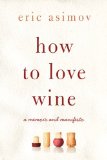 How to Love Wine: A Memoir and Manifesto by Eric Asimov How to Love Wine: A Memoir and Manifesto by Eric Asimov
Publisher: William Morrow
Publication Date: 10/16/2012
Advice/Memoir, 256 pages
Number of reader reviews: 10
Readers' consensus: 
BookBrowse Members Say
"At last, a book about wine for the rest of us!" - Anna S. (Auburn, AL)
"I suggest as a title A Love Affair With Wine as more appropriate to the relationship the author has had with wine throughout his life. The book is an easy read and thoroughly enjoyable. ... Threaded throughout his education of wine is Mr. Asimov's personal story of how he came to be the Chief Wine Critic (and the only one!) for the New York Times. He teaches the reader to let go of intimidation and to just dive into the wine experience, to try different wines, to be adventurous, and to relish the experience." - Patricia F. (Stony Brook, New York)
"Whether you appreciate the nuances of fine wine and the drinking thereof or you do not, this book is carefully crafted to be appreciated by a reader of fine writing. Several times I was caught up in a turn of phrase that made me jealous of Eric's writing ability. In addition, the content was useful and interesting. It made me realize that my wine appreciation was just fine, thank you very much. ... This tome is a mini-treasure trove of information about how wine assessment really works (and doesn't). I will read it again and share quotes with my friends. No wine snobs need apply." - Barbara C. (Riverside, CA) "Eric Asimov is trying to save the world from the tyranny of tasting notes, wine scores, and blind tastings. ... Asimov hopes to convince people that is possible to enjoy and even love wine without being able to pinpoint every last flavor and aroma. He wants it to be an emotional experience, not merely an intellectual one. He weaves this manifesto with the humorous telling of his own journey as a wine lover." - Celia A. (Takoma Park, MD)
Above are abbreviated comments from 4 of the 10 BookBrowse members who reviewed this book. Read all the Reviews Buy at Amazon |
|
Readers Recommend
 Illuminations: A Novel of Hildegard von Bingen Illuminations: A Novel of Hildegard von Bingen
by Mary Sharratt Publisher: Houghton Mifflin Harcourt Publication Date: 10/09/2012 Historical Fiction, 288 pages Number of reader reviews: 16 Readers' consensus:  BookBrowse Members Say BookBrowse Members Say " Illuminations is a fascinating fictional account of the life of Hildegard von Bingen, the 12th century mystic, writer, composer, and Benedictine abbess. The novel contains a wealth of historical detail, but its true strength lies in the complex characterization of Hildegard, who is portrayed as a deeply religious but flawed individual who overcame much in her life to become the only sanctioned female theologian of her time. ... Illuminations would also be a great book club book." - Terri O. (Chapel Hill, NC) "An absorbing and vivid tale, I highly recommend it." - Tilli F. (Florence, MA) "A lively, playful child, she claimed to see visions from an early age. Her mother, fearing that her daughter may be influenced by the devil, pledged Hildegard to a monastery at age eight as a handmaiden to an "anchorite", a special nun who spent her life in fasting and prayer in a sealed room attached to a monastery. ... As grim as Hildegard's life appears, her story is truly engrossing, inspiring wonder and courage that Hildegard was able to overcome so much adversity and contribute such music, knowledge and a sense of power which inspired the young women of her time. Deftly written, this novel places the reader fully into Hildegard's life and time with fully rounded characters, the historical backdrop of the Crusades and the ongoing struggle of women to overcome the social roles expected of them." - Therese X. (Calera, AL) "It is an excellent book for a book club. It is suspenseful, holds your attention, and fast moving. It reminded me of The Red Tent where Dinah was portrayed." - Diane R. (Munger, Michigan) "I'm a big fan of Mary Sharratt, and Illuminations is one of her best novels yet." - Jill S. (Eagle, ID) Above are abbreviated comments from 5 of the 16 BookBrowse members who reviewed this book. Read all the Reviews Buy at Amazon
|
|
Featured Review
Below is part of BookBrowse's review of Short Nights of the Shadow Catcher. Read the review in full here 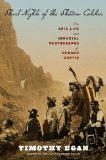 Short Nights of the Shadow Catcher: The Epic Life and Immortal Photographs of Edward Curtis
by Timothy Egan
Hardcover (Oct 2012), 384 pages. Publisher: Houghton Mifflin Harcourt BookBrowse Rating:  Critics' Consensus:  Review: Review: Timothy Egan's robust biography of Edward Curtis is not only the record of a prophetic artist's life and work, it is a transfixing story of audacious achievement and massive commercial failure during a period of stunning cultural blindness and injustice. Curtis began his career as a society photographer, but is arguably best remembered for his work capturing the lives of Native Americans on film. Egan's portrait of Curtis, who produced an historic twenty-volume photographic and cultural record of America's native peoples, is a masterful and ironic double-exposure: Curtis's life comes into sharpest focus against the backdrop of indigenous America's fading world. As Native Americans and their cultures vanished, Curtis doggedly realized his project which itself was forgotten and almost permanently lost.  Curtis was an adventurer, a tough and intrepid outdoorsman, and, at the peak of his success, the photographer of America's rich and famous. But Curtis was not an art-school-trained insider like Annie Liebovitz. Egan presents a self-invented genius born in poverty whose vision was shared by only a handful of people during his lifetime. Though he was good at selling himself and working the system, Curtis looked at the world with an outsider's eye. Throughout the book, author Timothy Egan outlines the racist stereotypes and attitudes about Native Americans at the time. In the early years of the twentieth century, for example, they were regarded as less than fully human and their religious practices were illegal. Curtis grasped their diffuse and powerful spirituality, read deep emotions in their stoic faces, and intuited the stark oppositions of light and dark, water, earth, and sky that defined their sacred landscapes. It is interesting that Curtis was at the height of his success as a society photographer when he turned to his first Native American subject, an indigent and battered Native American woman who would change his life... continue reading Reviewed by Jo Perry Above is part of BookBrowse's review of Short Nights of the Shadow Catcher. Read the review in full here
|
|
Beyond The Book
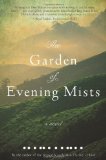
At BookBrowse, we don't just review books, we go 'beyond the book' to explore interesting aspects relating to the story.
Here is a recent "Beyond the Book" feature for The Garden of Evening Mists by Tan Twan Eng. Read the backstory & review in full here
Ukiyo-e and its Place in Japan The Japanese gardener Nakamura Aritomo in The Garden of Evening Mists is an accomplished ukiyo-e artist. This art form, like most others, was a product of time and place but ukiyo-e was especially so. Hundreds of years ago (1615-1868) the Tokugawa shoguns ruled Japan according to a strict class-based, hierarchical society. They made Tokyo (then known as Edo) their capital and the city grew to be a thriving and vibrant one. The Tokugawa placed warriors such as themselves first, followed by farmers, artisans and merchants. The artisans and merchants were considered lower classes and were subject to severely repressive laws that governed how they dressed and lived. The shoguns understood, however, that the merchant class was a particularly thriving one and that the lower classes would need some kind of escape to prevent unrest from fomenting against established order. This "escape" took the form of a vibrant theater and brothel district in Edo, a "floating world" that catered to the oppressed classes in Edo. This theater ( kabuki) and brothel district ( yoshiwara) in Edo provided the inspiration for much of the early works of ukiyo-e - literally translated as "pictures of the floating world." In their early stages, ukiyo-e were created to advertise local theater performances and even to flaunt the prettiest women in the brothels. Ukiyo-e were also used as book illustrations. This art form was unique because it could be mass-produced, so most people could afford a print made on a scroll to hang in their homes. Prints were often put up on walls and sliding doors or on folding screens. Also while the creator of the original drawing was recognized as the primary artist, the final print was a collaboration between the artist, the woodblock cutter and the production studio which generated the prints. The artist created the original drawing, the woodcutting artist recreated it on a block of wood using very fine tools, and then prints were created using available colors. As ukiyo-e gained in popularity, the art form began to explore images outside the "floating world." A national love of nature and landscape began influencing the medium and some of the most dramatic ukiyo-e images are those of landscapes. Of particular note is "Thirty-six Views of Mount Fuji" by artist Katsushika Hokusai. It can be argued that one particular print, "The Great Wave off Kanagawa", from this series is the most instantly recognizable image of Japanese art.  Ukiyo-e Ukiyo-e had a great influence on Western art. The Dutch artist, Vincent van Gogh, had a private collection and attributes of Japonisme (a style of art with Japanese elements) can be seen in some of his paintings. At the same time, Western influences were also apparent in ukiyo-e - prints such as "Western Traders at Yokohama" and "Prosperous America" allow us to see the west through the Japanese ukiyo-e perspective. While ukiyo-e as a popular art form started fading in the nineteenth century, Japanese and other artists have continued to apply its principles (including its strong reliance on fantasy) to their art. Nakamura Aritomo, in The Garden of Evening Mists, used the principles of ukiyo-e to create art designed to memorialize his native country. Ukiyo-e can be viewed in museums and galleries around the world including in Japan, Britain and the United States. The Library of Congress has an extensive collection. Above is the back story of BookBrowse's review of The Garden of Evening Mists.
Read the review & backstory |
|
Book Club Chat
 What do you do when the cops interrupt a perfectly good book club meeting? Johnna Puttoff of The Sisterhood - a 13-year-old book group based in Frankfort, Kentucky - explains. Read interview What do you do when the cops interrupt a perfectly good book club meeting? Johnna Puttoff of The Sisterhood - a 13-year-old book group based in Frankfort, Kentucky - explains. Read interview
|
|
Blogs:
Siri Hustvedt Saved My Life
If you ever wondered about the power of a little encouragement, whether it really can make a difference, read on!
When I was young, in high school and in college, I wrote short stories. I thought they were pretty good. At age 23, with a reasonably promising career as a Coast Guard officer ahead of me, I wanted to quit and write literary stuff.
I was dissuaded from doing so by my family, who perhaps expected more from me economically. So instead of getting an MFA, I got an MBA. Instead of writing literary stuff, I ended up at Lehman Brothers.
A career in finance is all-consuming. I put my writing aside for a very long time (along with pretty much everything else), and I focused on trading and making money. I was happy, because I found this to be a worthwhile pursuit. But, in parallel fashion, I was mentally ill, seriously so. Though I didn't know it at the time, I suffered from a severe form of bipolar disorder, which may have been made worse by the stressful, almost sadistic working conditions of an investment bank.
I was hospitalized in what was an emotional and spiritual bottom. I went from a trading desk at Lehman Brothers in the middle of Times Square to a psychiatric ward, where the usual precautions against sharp objects were taken. I didn't know how long I would be there. I didn't even really care. More....
Great Reads for National Reading
Group Month
October is National Reading Group Month, and the Women's National Book Association (the group behind the event) are celebrating the fifth annual event with a focus on 20 titles ripe for book clubs. Just click below to explore each of these titles on BookBrowse. More...
Inspiration for the Rest of Us: Nourishing the Soul in a Secular Age by Mary Sharratt
Writing a novel about Hildegard von Bingen, the 12th century visionary abbess and polymath, was a daunting process. I felt intimidated to be writing about such a religious figure. The last thing I wanted to do was churn out preachy inspirational fiction which would be both unconvincing and hypocritical coming from me, a lapsed Catholic who falls under the "spiritual but not religious" umbrella. How could I make Hildegard's story seem fresh and relevant to a modern secular audience?
For guidance, I turned to the literary fiction that has nourished and inspired me. Literature touches our spirit in a way that film, television, and even art cannot, for instead of presenting the passive viewer with a visual image, good writing demands our participation and co-creation. The words become the springboard for our own imagined vision of other worlds and other lives. In this imagined space, we can experience profound insights and revelations--soul-growing experiences we carry with us forever. More...
|
|
Win
 Shout Her Lovely Name Shout Her Lovely Name
by Natalie Serber
Publication Date: Jun 2012
Enter the Giveaway
Buy at Amazon
Past Winners
Reviews:
"Call it fiction, but this collection is achingly true to life when it comes to the many ways mothers and daughters grow together and apart, over and over again." - O, the Oprah Magazine
"From its first page, Serber's debut collection plunges us into the humid heat and lightning of a perfect storm: that of American mothers and daughters struggling for power, love, meaning, and identity...Serber's writing sparkles: practical, strong, brazenly modern, marbled with superb descriptions." - San Francisco Chronicle
"Mothers and daughters burst from these pages in stories about food, boyfriends, birthdays, husbands and more." - Houston Chronicle
"There is an element of the miraculous in a collection of stories whose characters reveal the fundamental predicament of all parents and children... .[Serber is] clearly writing not from some high plane of solitude but from within the mess of life." - Huffington Post
"Starred Review. Serber's stellar first collection packs an emotional wallop right from the start...sharp, somber, and sparkling commentary... As provocative as it is poignant, Serber's searingly honest depiction of the complex, contentious, and confusing bonds at the heart of all families heralds an exceptional new talent." - Booklist
5 people will each win a hardcover copy of Shout Her Lovely Name.
This giveaway is open to residents of the USA only, unless you are a BookBrowse member, in which case you are eligible to win wherever you might live.
Enter the giveaway here |
|
|
Discuss
Please join us
to discuss
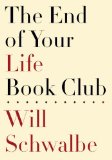
____________
Discussion
Starting Soon
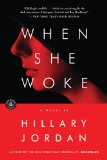
Discussion Opening October 23
|
Author Interviews
Jonnnie Hughes discusses "The Evolution of Ideas (and Ourselves)" - the subject of his book, On the Origin of Tepees
.
Rachel Joyce discusses her first book, The Unlikely Pilgrimage of Harold Fry |
|
|
|
Wordplay
Solve this clue "O M U T B, Dear F" and be entered to win the book of your choice from a wide selection Enter NowAll winners are contacted by email. View list |
Answer to the Last Wordplay
N I Certain B D A T Nothing is certain but death and taxes Background:
This proverb appears to have its root in Daniel Defoe's Political History of the Devil (1726):
"Things as certain as death and taxes, can be more firmly believed."
The first reference found in the USA is in a letter Benjamin Franklin wrote to Frenchman Jean-Baptiste Leroy dated November 13, 1789:
"Our new Constitution is now established, and has an appearance that promises permanency; but in this world nothing can be said to be certain, except death and taxes."
|
|
News
Oct 16 2012:
Actor Johnny Depp is partnering with HarperCollins to start an imprint, Infinitum Nihil ("Nothing is forever"), that will seek "authentic, outspoken and visionary ideas and voices," ...(more)
Oct 16 2012:
Hilary Mantel has won the 2012 Man Booker Prize for her historical novel, Bring Up the Bodies. This is the second time Ms Mandel has won the prize, after winning with Wolf Hall ...(more)
Oct 11 2012:
Chinese author Mo Yan has won the 2012 Nobel Prize in Literature. Jonathan Ruppin of UK bookstore Foyle's commented that: "There's been interest in Chinese literature in the last few years and people will be curious. He's clearly a very visionary and individual writer." The author, whose real name...(more)
Oct 11 2012:
BookShout, a social reading and book retail application, is introducing new technology that will allow its users to legally import their previous and future e-book purchases into their BookShout account, free of charge, no matter where they were purchased...(more)
Oct 11 2012:
Eric Lomax, a former British soldier who was tortured by the Japanese while he was a prisoner during World War II and half a century later forgave one of his tormentors - an experience he recounted in a memoir, The Railway Man (1996) - died on Monday. He was...(more)
Oct 10 2012:
Members of the Canadian Booksellers Association are being asked to decide on the future direction of the association at its upcoming annual general meeting. ...(more)
Oct 10 2012:
The finalists for the National Book Awards have been announced. The winners will be named on November 14...(more)
Oct 09 2012:
Mr. Thien, a dissident writer who has been called the Solzhenitsyn of Vietnam for the sheaves of poems he wrote opposing the Communist government there - and for the prolonged imprisonment, including torture and solitary confinement, that his efforts earned him - died on Tuesday in Santa Ana,...(more)
|
|
|